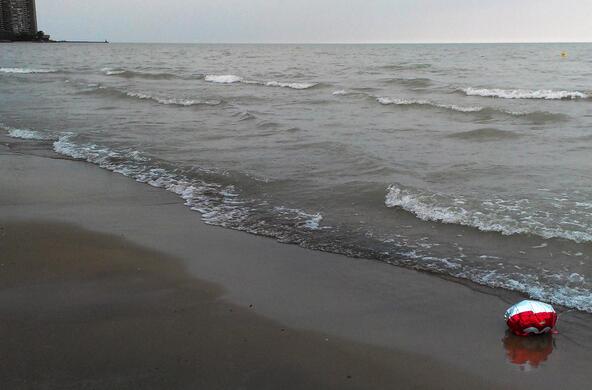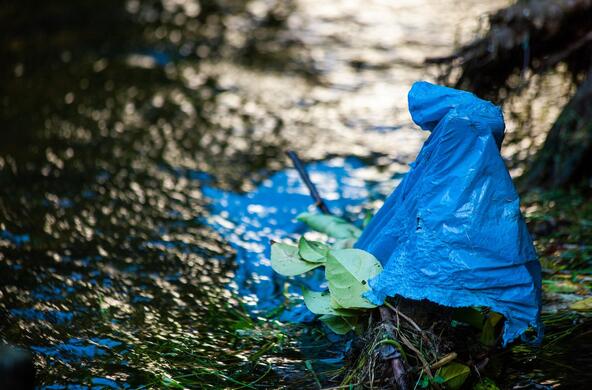Every spring when the weather gets delightfully warm enough, my wife and I walk the shoreline of our property on Cobscook Bay, to pick up all human-associated debris that has accumulated during the past year—plastic bottles, work gloves, fish crates, old tires, and especially nylon rope.
Of course, sailors and fishermen call this nylon line—on a boat, only a dope calls it rope—and it comes in a wide variety of sizes (half to ¾-inch diameter being the most popular) and colors (orange, yellow, aqua and more). Most people do not immediate think of nylon when they think about plastic pollution, but nylon is another of the wide variety of polymers made from petroleum, contributing to the plastics that pollute the ocean. In time, nylon degrades in sunlight to thin fibers and small particles, easily ingested by wildlife.
What astounded us is the sheer volume of nylon line discarded by fishing boats. Along our ¼-mile shoreline, we collected more than 44 pounds of nylon line, or about 176 pounds per mile. Assuming that our shoreline is representative of the larger Cobscook Bay, which is estimated by NOAA to have 200 miles of shoreline, the amount of discarded nylon line equals 35,200 pounds or 17.6 tons per year for the entire Bay. The calculation is rough since the shoreline is convoluted (Cobscook Bay has among the highest calculated fractal dimension) and the currents in the Bay are not uniform. But, from our perspective, nylon line dominates the total amount of human debris, largely plastic, that comes ashore here.
Nylon line seems stronger, cheaper, and more convenient than traditional hemp-based rope. It is easier to cut off a tangled line than to recover it. We recover some that is still attached to buoys and lobster traps, so appears that a fair amount of line is lost during normal operations. Often, we hear that the proliferation of nylon line interferes with whales and sea turtles, but seldom do we see it listed amongst the plastic debris that washes ashore from the sea.
We all appreciate the efforts of fishermen to bring seafood to our table. Perhaps they could bring scraps of nylon line back to port as well. Start-up businesses are emerging for the recycling of nylon into other products. Moreover, reductions in the loss of nylon line might be easy to encourage, with some type of cash deposit on the line when it is sold and refunds when the line is returned—like the can and bottle deposits so successfully implemented by the State of Maine years ago.
[Modified from its first appearance in the Quoddy Tides, 12 July 2019]
References
Chhabra, E. 2016. The Guardian, May 16. https://www.theguardian.com/
National Oceanic and Atmospheric Administration (NOAA). (Accessed June 2019). (https://www.greateratlantic.
Turner, B.R., E. Perfect, and Joseph T. Kelley. 2006. Fractal analysis of Maine’s glaciated shoreline tests established coastal classification scheme. Journal of Coastal Research 22; 1300-1304







